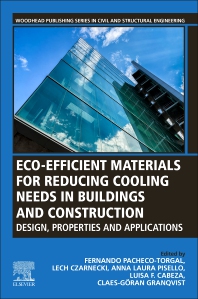Despite a recent stumbling block, work is progressing on the $447-million design-build contract to build a third raw water intake tunnel at Lake Mead—the Las Vegas Valley’s water lifeline.
The Southern Nevada Water Authority awarded the contract in March 2008 to Vegas Tunnel Constructors LLC, a joint-venture of S.A. Healy Co., Lombard, Ill. and Impreglio S.p.A., Sesto San Giovanni, Italy. The additional intake is needed because lake levels have dipped 110 ft since 2000.
Lake Mead now operates at 1,087 ft, or about half of its capacity. One or both of the existing water inlets will be forced to shut down if the lake level drops another 80 ft, a likely scenario if the drought gripping the Southwest continues.
The new intake, SNWA’s largest project to date, will be able to draw water deeper than its counterparts because its lake opening is at 860 ft.
“It’s not going to add to capacity,” says Marc Jensen, SNWA’s director of engineering. “It’s insurance in case our current intakes become inoperable. It will also draw from lower inside the lake, ensuring a better water quality.”
Construction entails creating a 20-ft-diameter, 15,000-ft-long concrete-panel-reinforced tunnel under the lake bed. The contracting team purchased a $25-million tunnel-boring machine from Herrenknecht AG, Schwanau, Germany. The custom-built machine—an earth-chewing metal behemoth weighing 1,500 tons and measuring 600 ft long, including trailing equipment—is the project’s workhorse.
But tunneling plans ran into a snag in June when water seepage spun out of control and flooded a 200-ft-long by 37-ft-high assembly vault, making it no longer accessible. Workers were building a 28-ft-diameter, 100-ft-long horseshoe-shaped starter tunnel before using the TBM when the incident occurred.
The waterlogged cavern was eventually brought under control with two portable pumps that removed up to 1,300 gallons per minute. No one was injured, but some excavation equipment was left behind underwater. Underground TBM assembly had yet to occur.
Spokane, Wash.-based subcontractor Crux Subsurface Inc. started drilling north of the 30-ft-diameter, 600-ft-deep access shaft along Saddle Island’s western shore line in July. The firm will locate and reinforce voids in the rock with grout to stabilize geotechnical conditions. Water will then be pumped out so that TBM staging and assembly can begin.
The TBM will be able to operate in both open and closed modes, meaning the drill face is pressurized, for more efficient ground and water control, says Vegas Tunnel Constructors project manager Jim McDonald.
The machine took 17 months to design and build. It was shipped disassembled to the Port of Long Beach, Calif., and transported to the Southern Nevada jobsite along Saddle Island’s western shoreline in 61 heavy-duty truck loads. It took months of planning and coordination to map the route and secure the special permits.
Underground machine assembly and testing will take four months. Components will be lowered down the access shaft using a headframe and specially built gantry system with dual 200-ton strand jacks. Next, the contractor will use hydraulic jacks and a rail system to slide and fasten machine components together.
The TBM will carve out a 3-mile-long tunnel under the lake bed. The tunnel will eventually channel raw Colorado River water onto nearby treatment plants before being pumped to homes and businesses throughout the Las Vegas Valley.
The machine works like a giant mechanical earthworm. It gnaws through dirt and rock, forming a protective tunnel. Earth is carried out by conveyor belt, while a machine trailer and crane install 2,500 supporting concrete rings, each weighing 35 tons.
Each ring consists of six separate pieces that are cast in nearby Sloan before being trucked to the site. The contractor hopes to install up to five rings per workday. Although the TBM has only one operator, a dozen support people, some of whom trained in Germany, are needed to ensure smooth operation.






